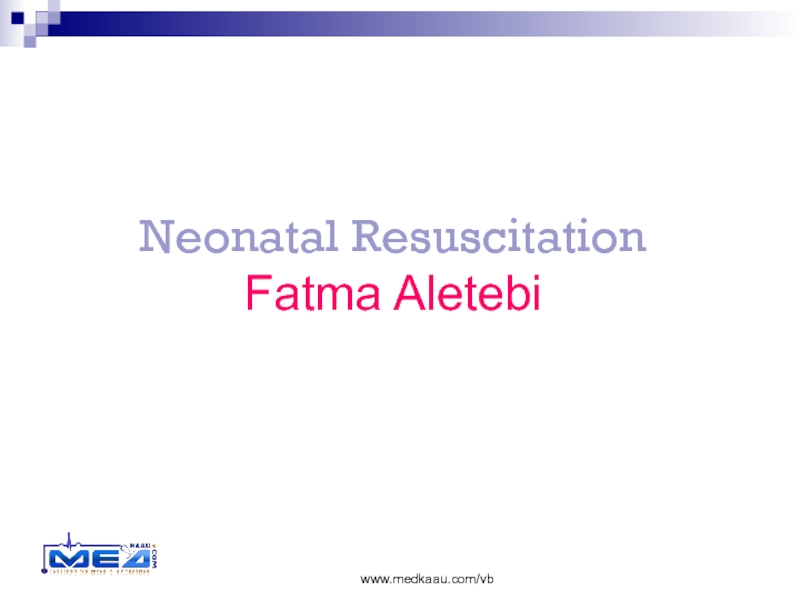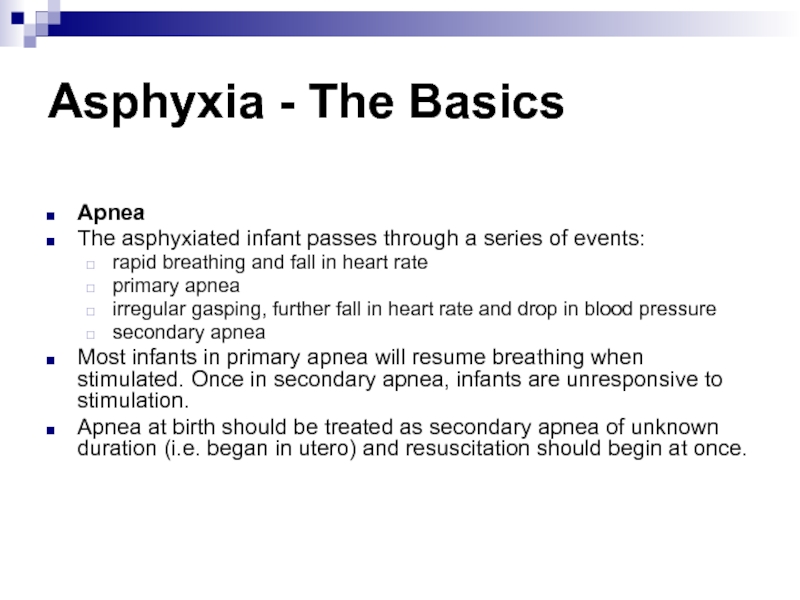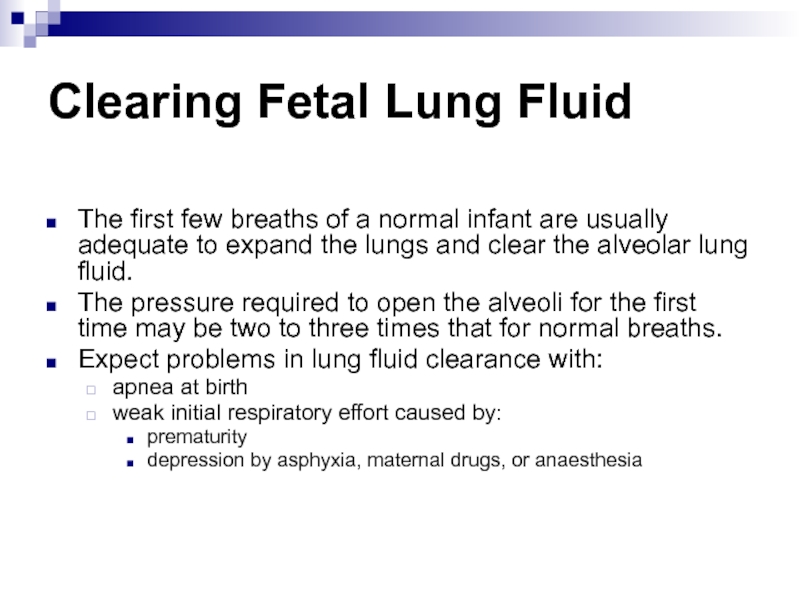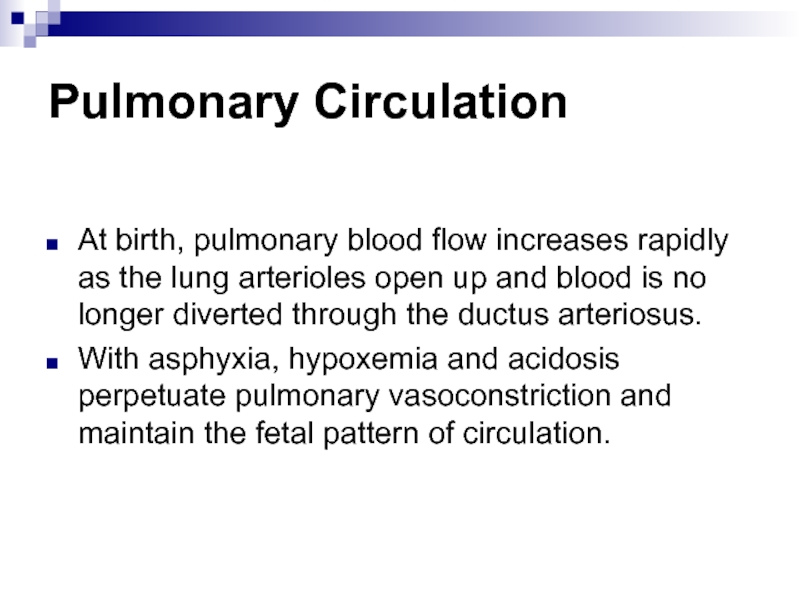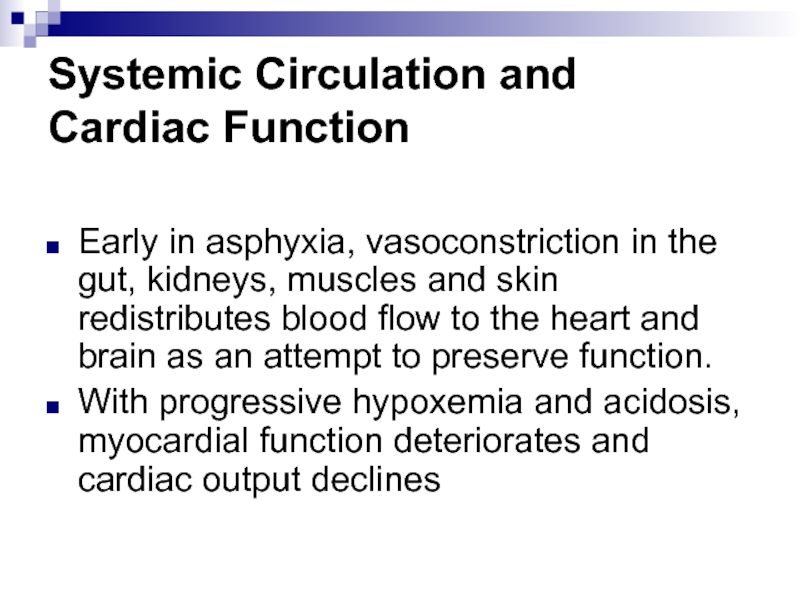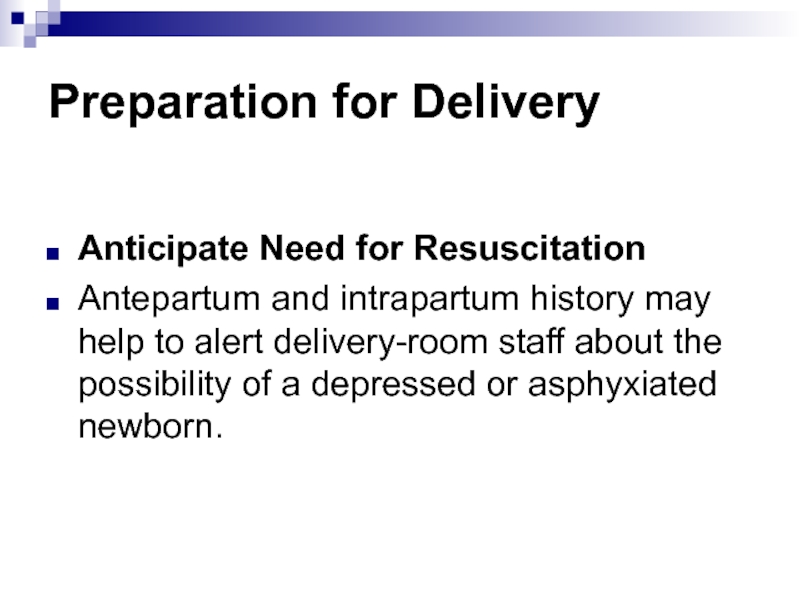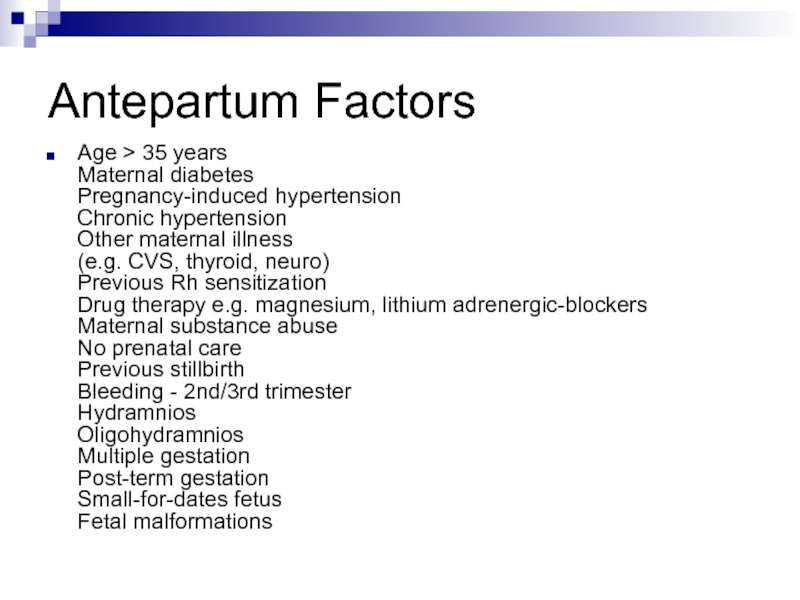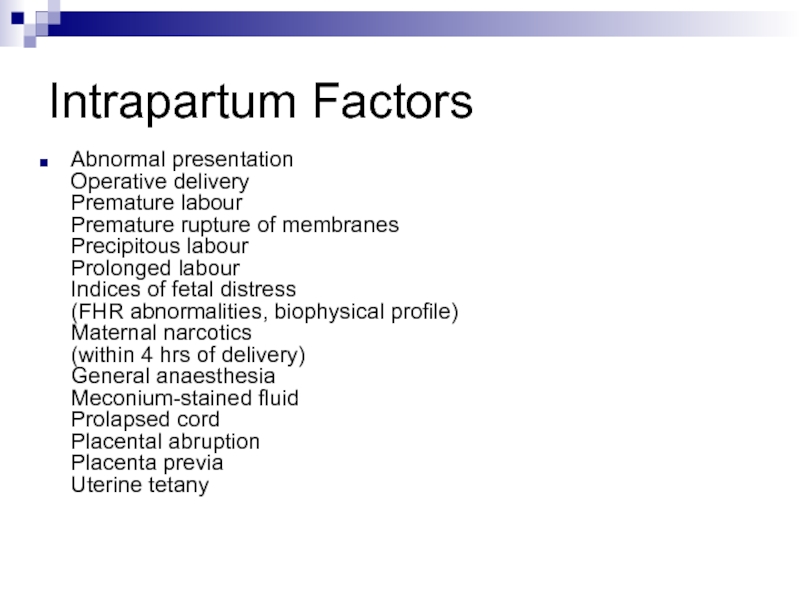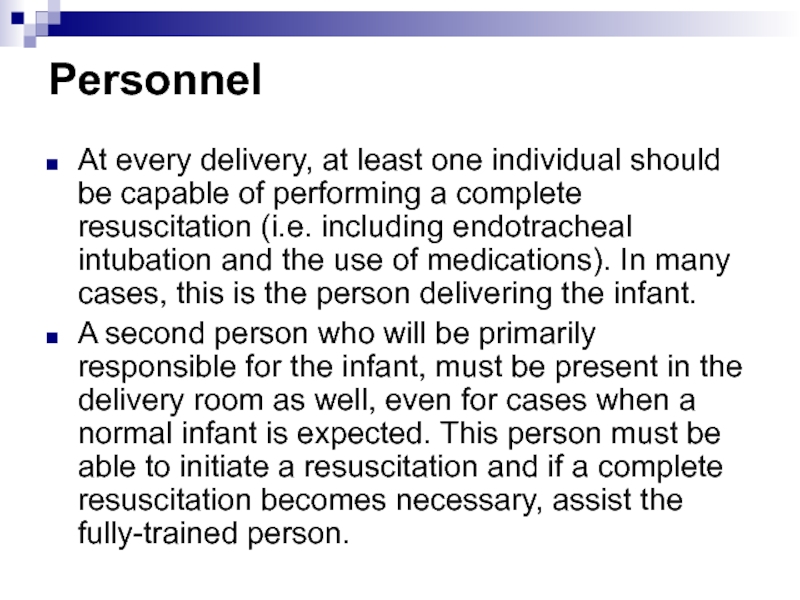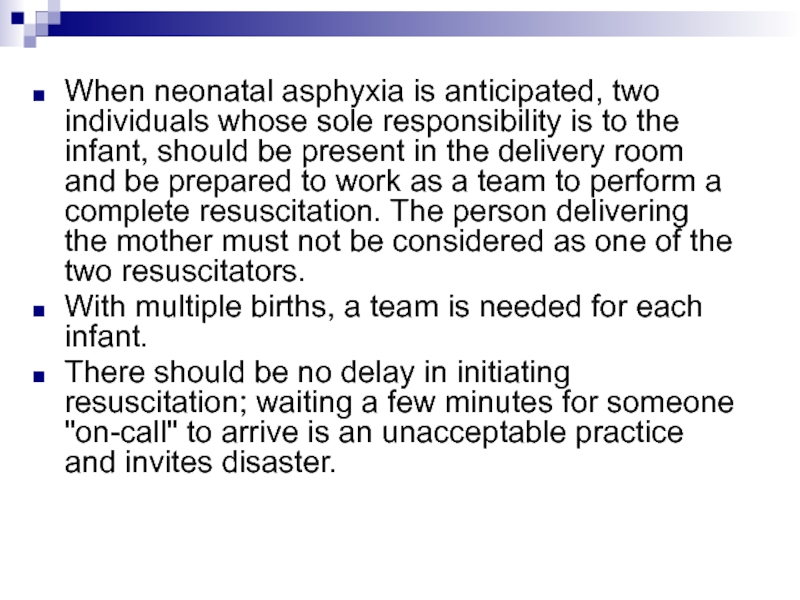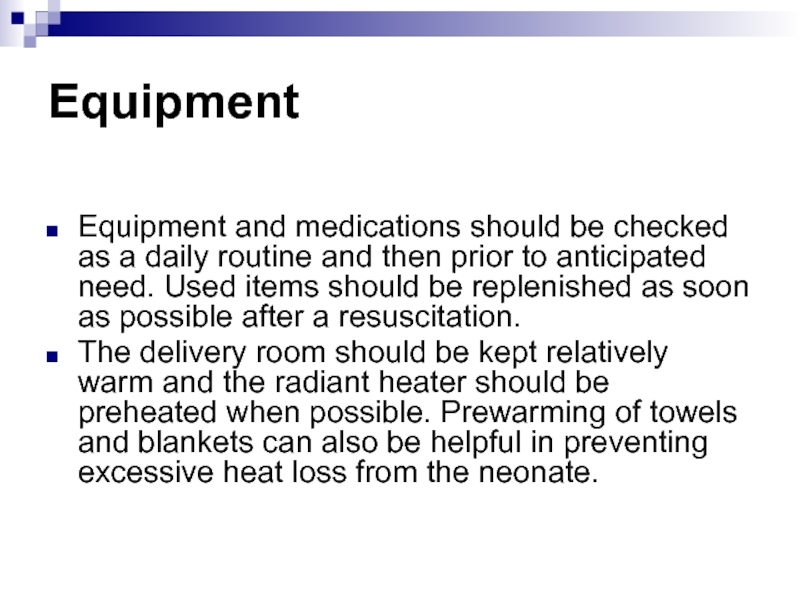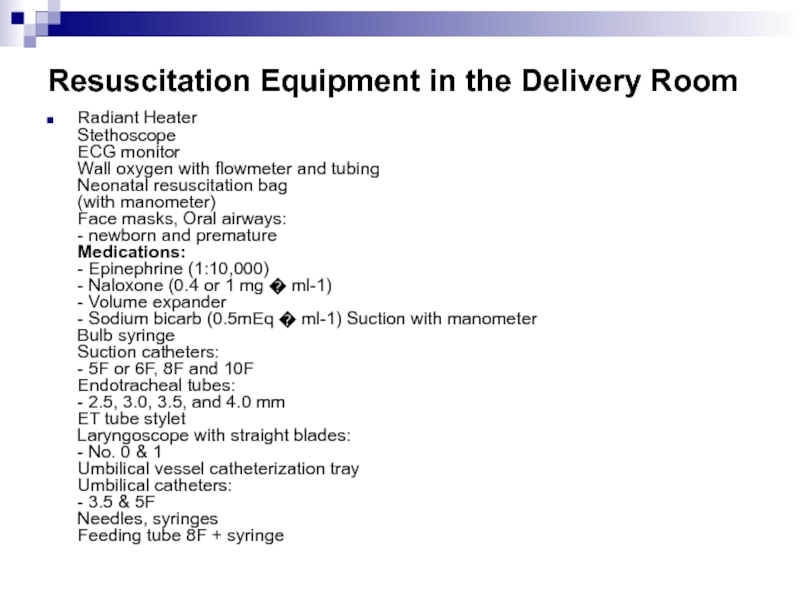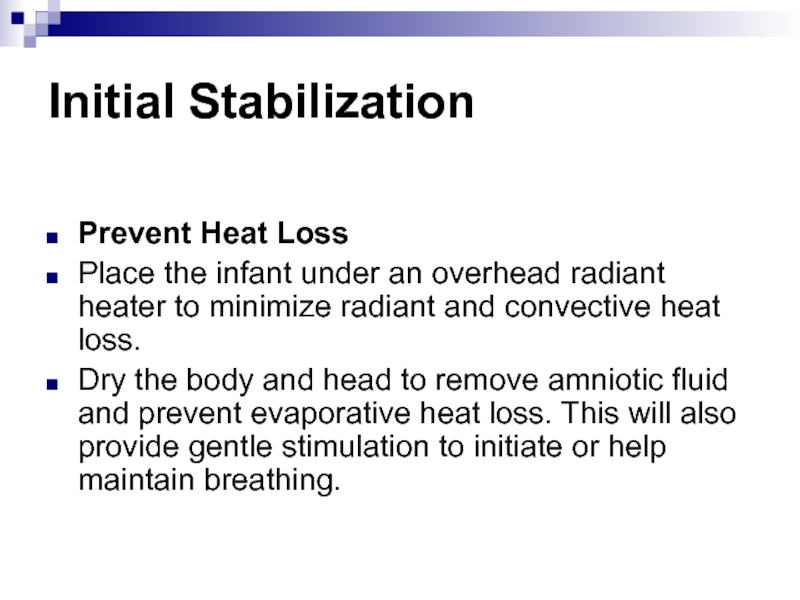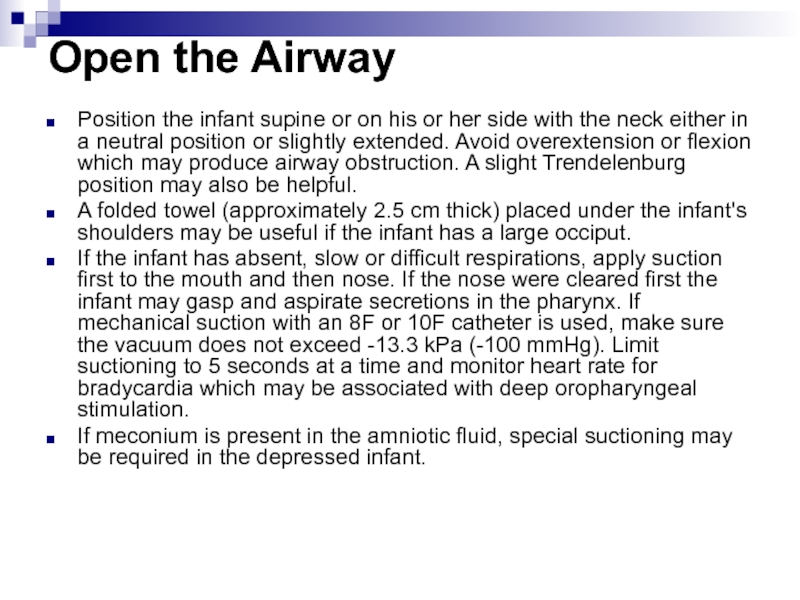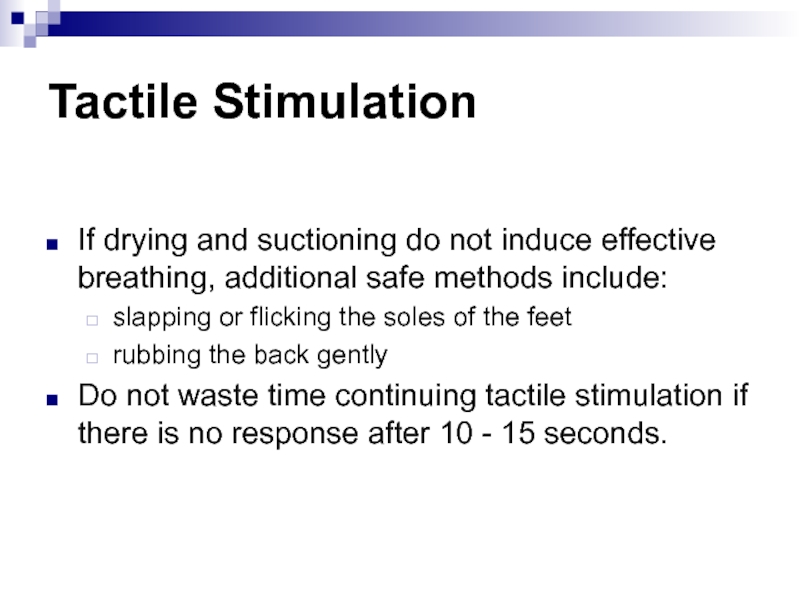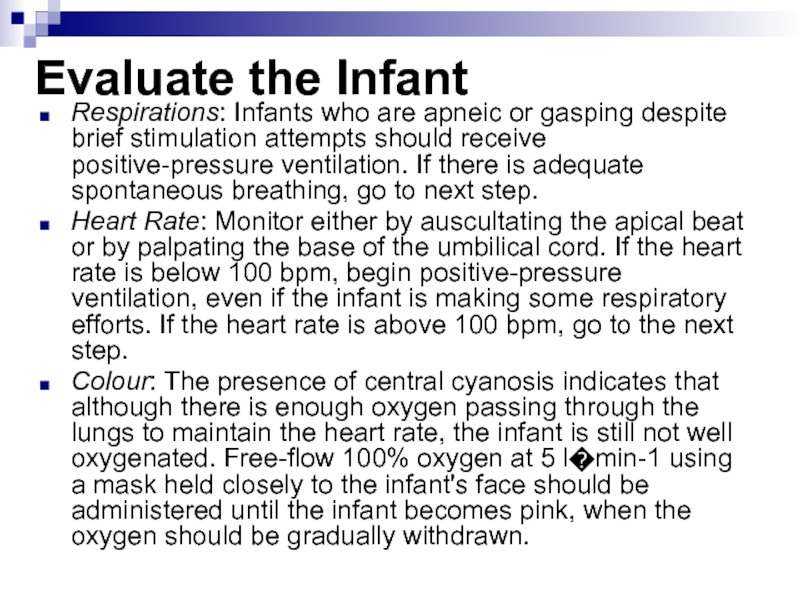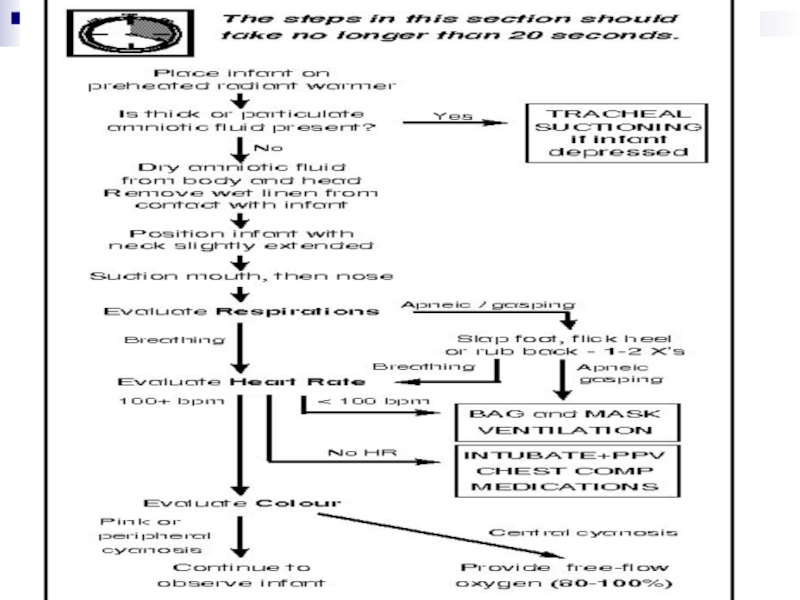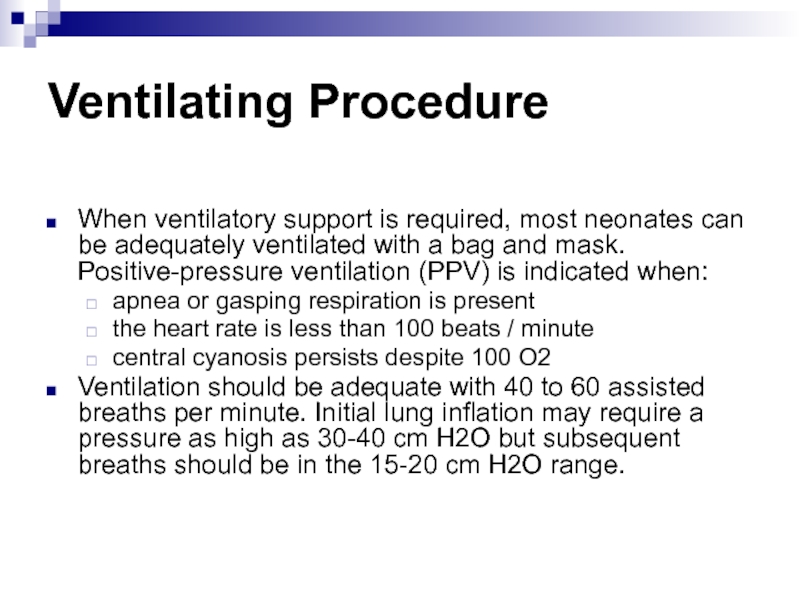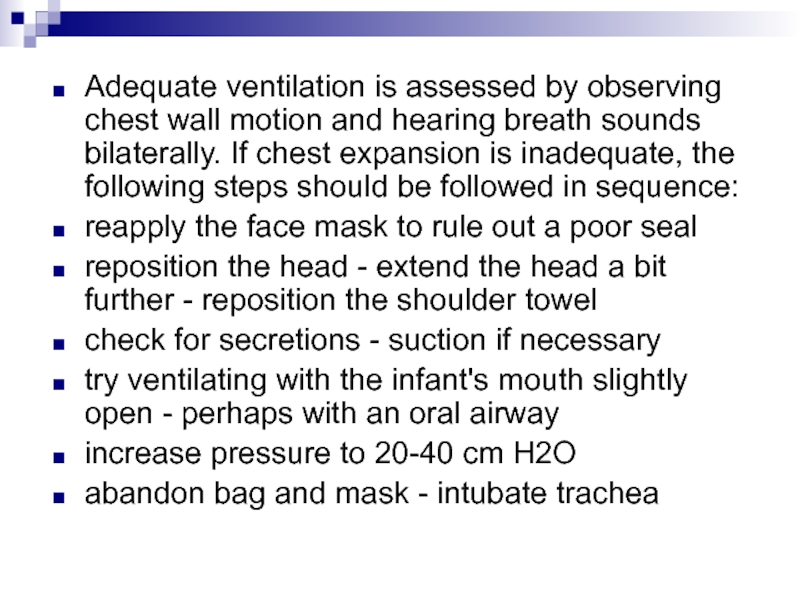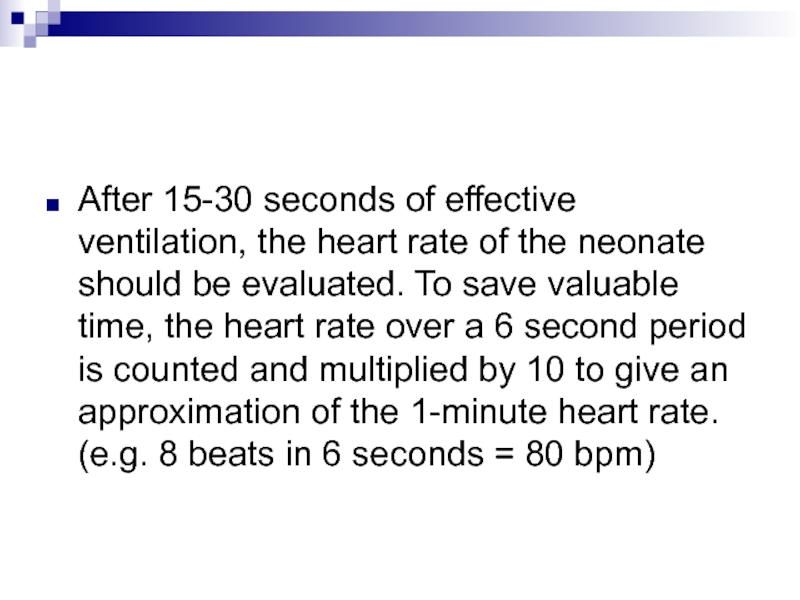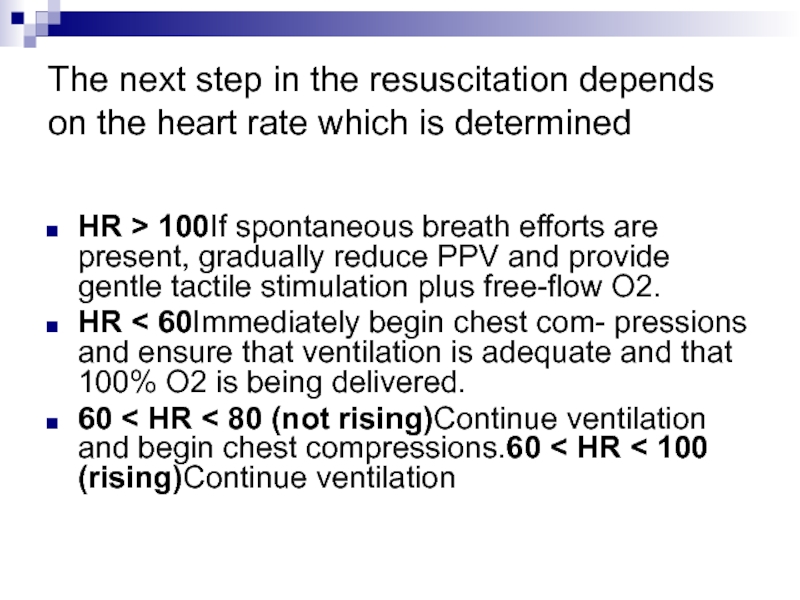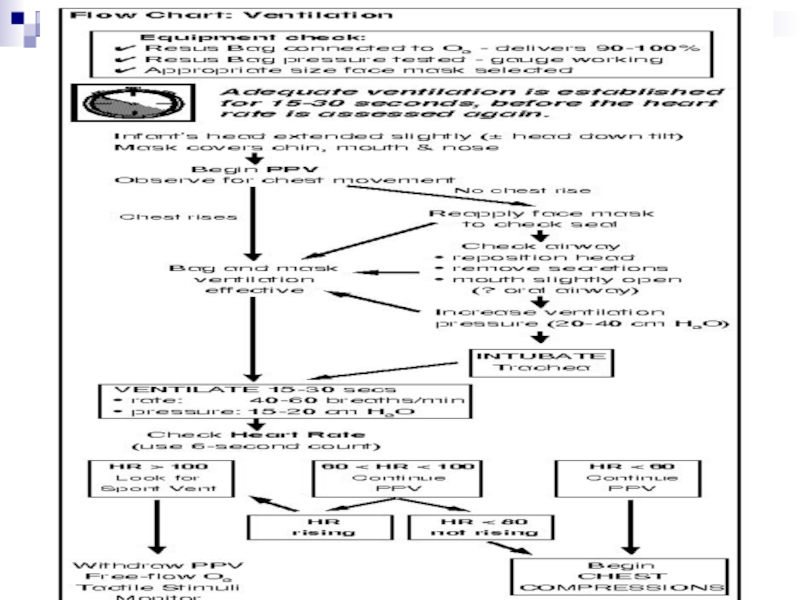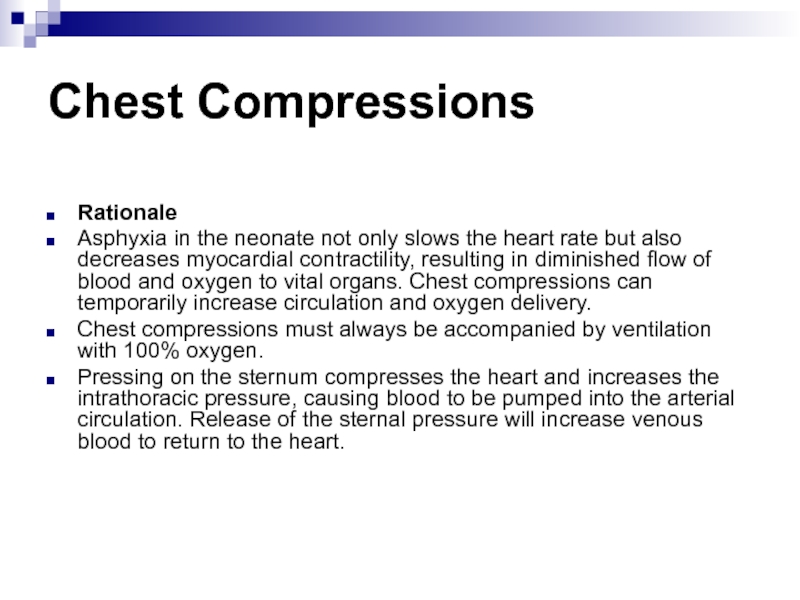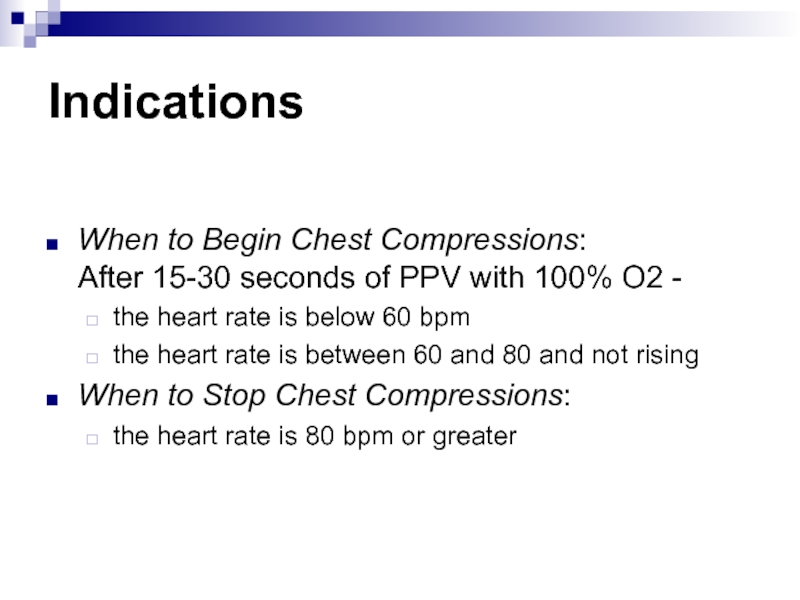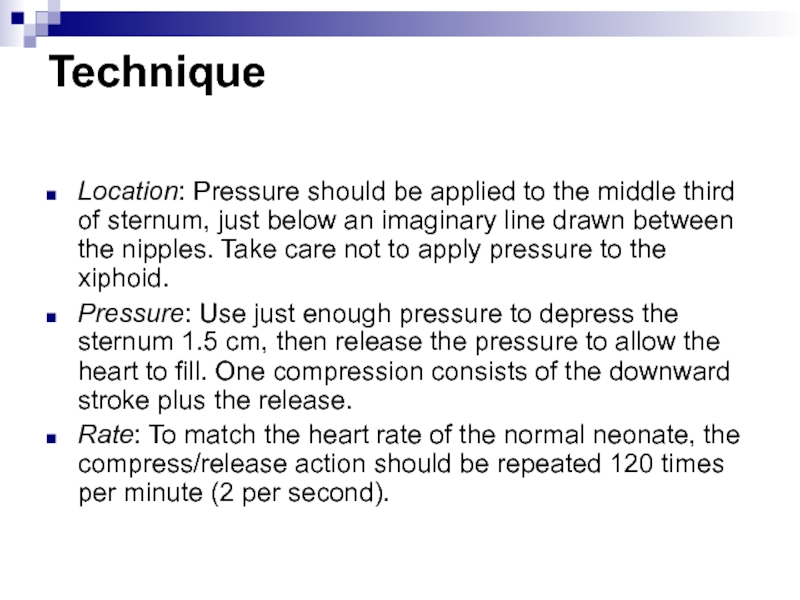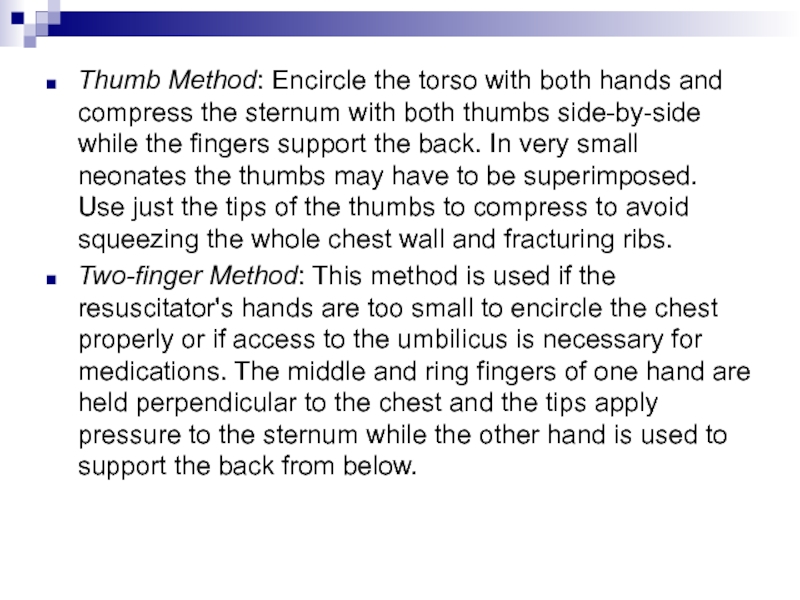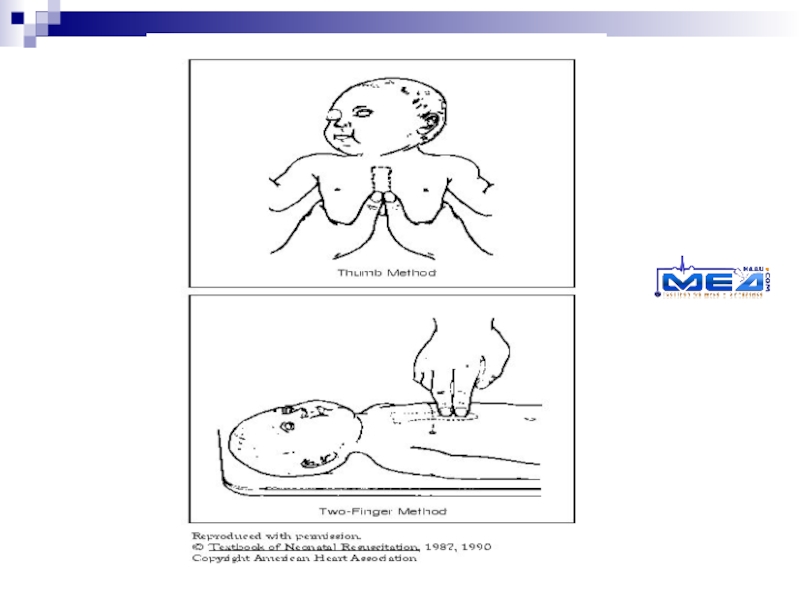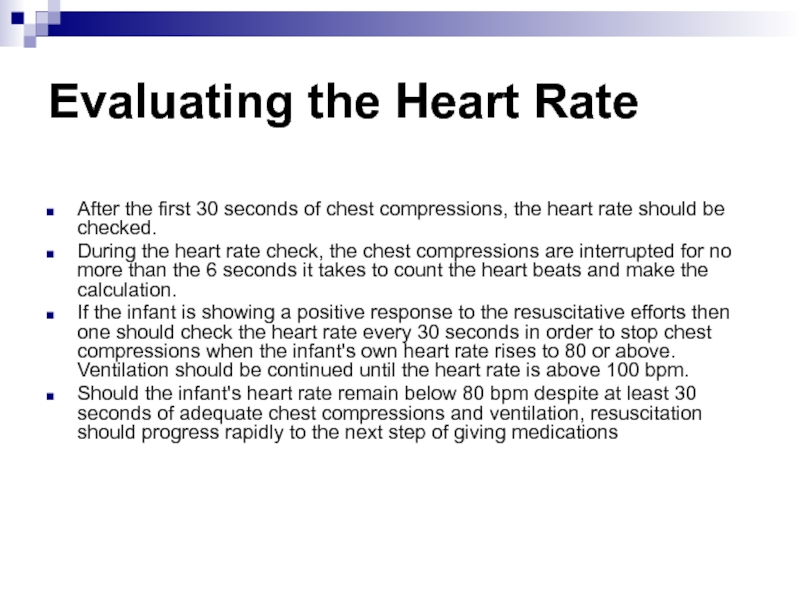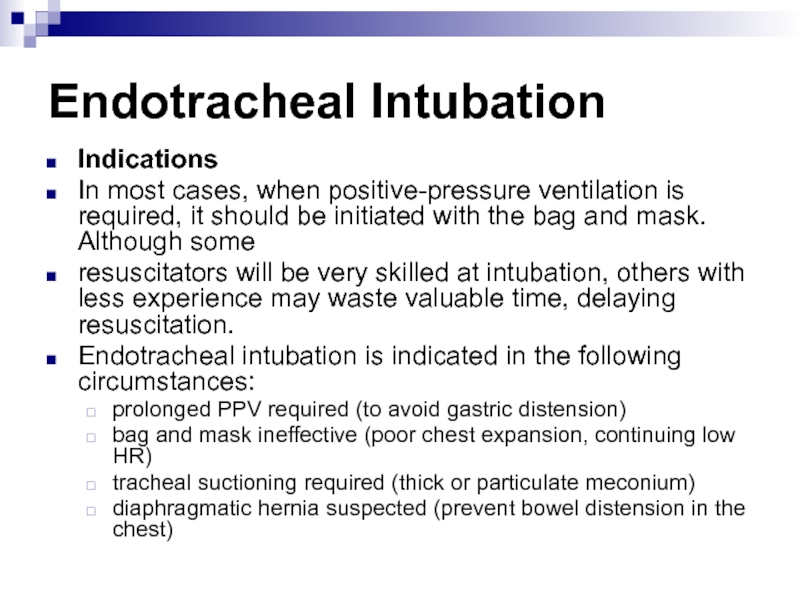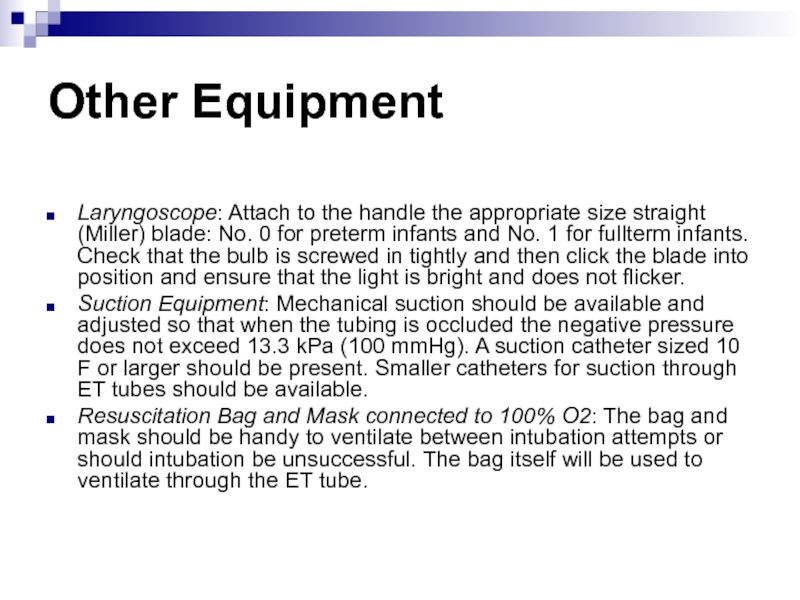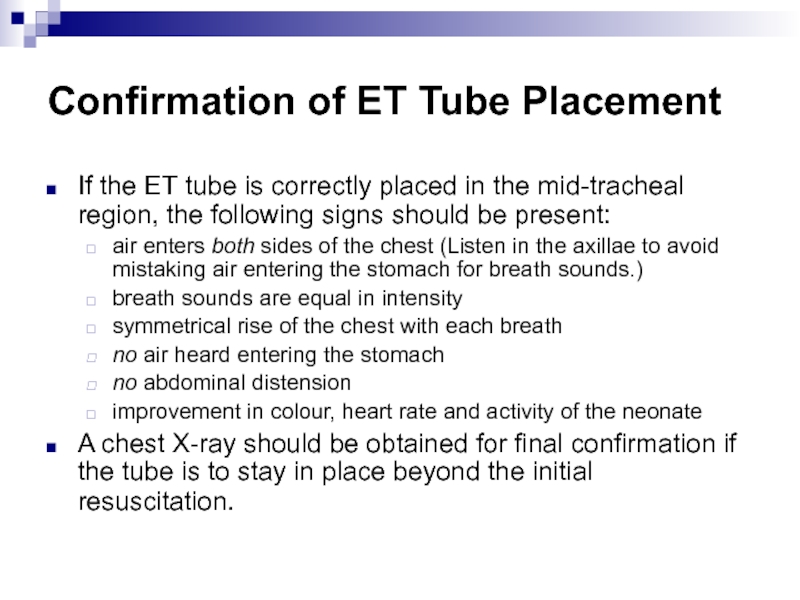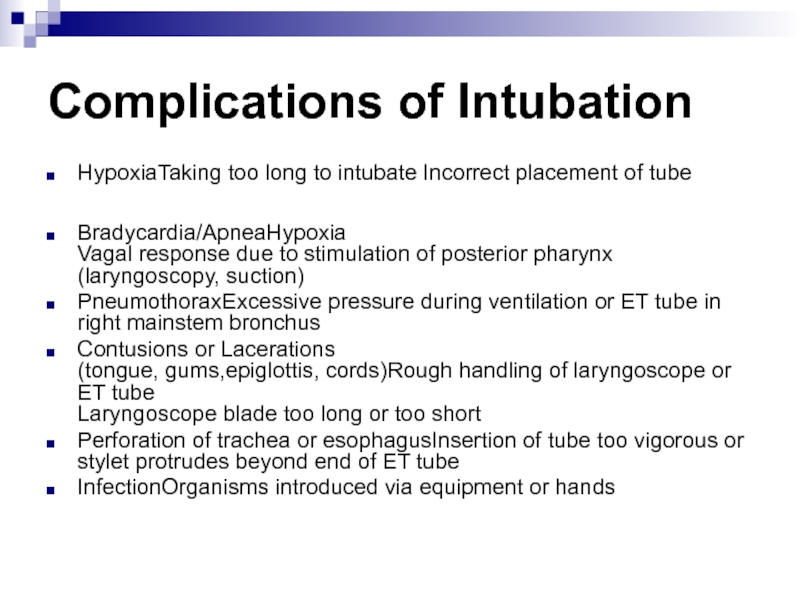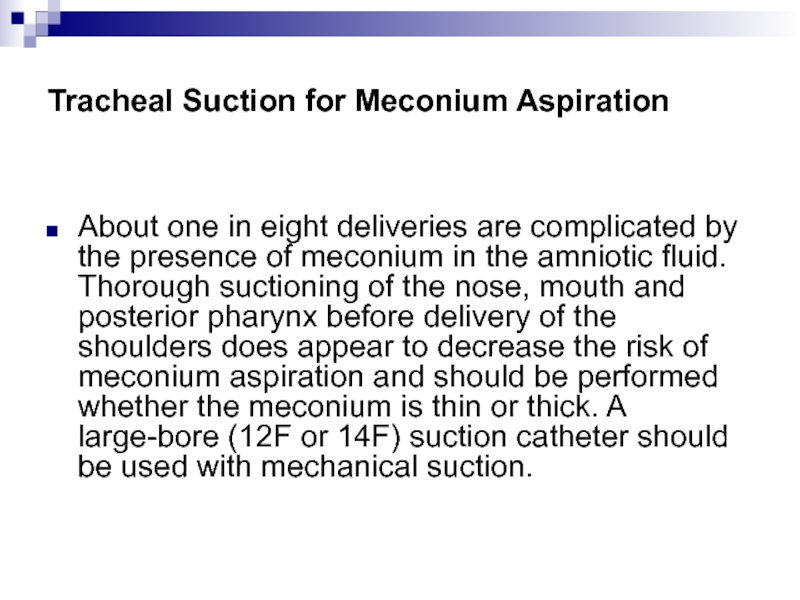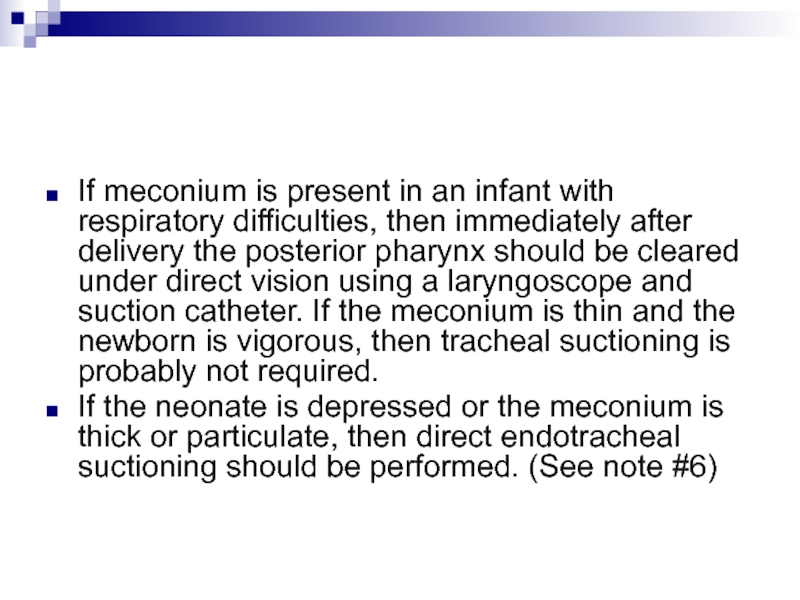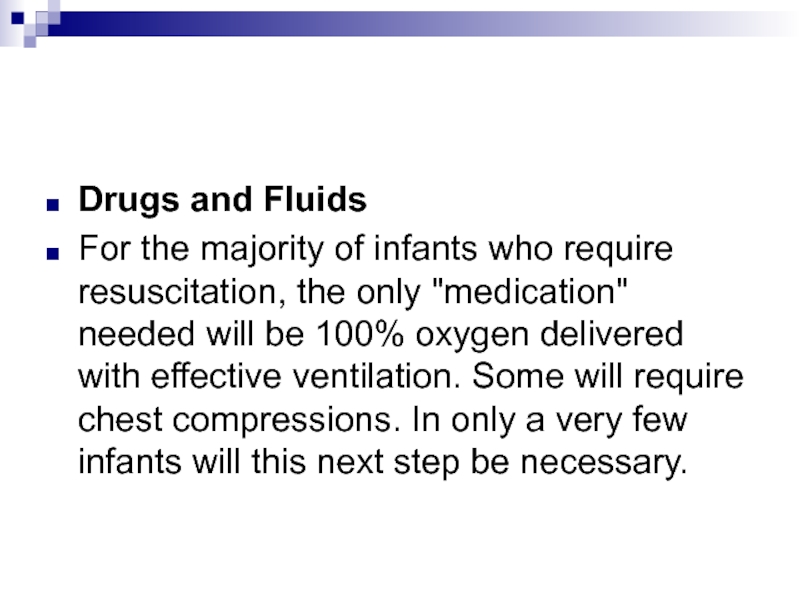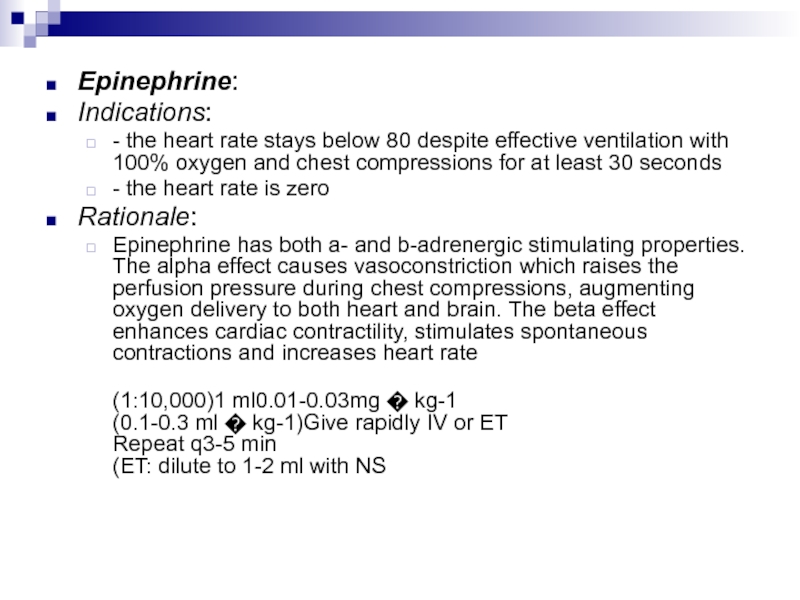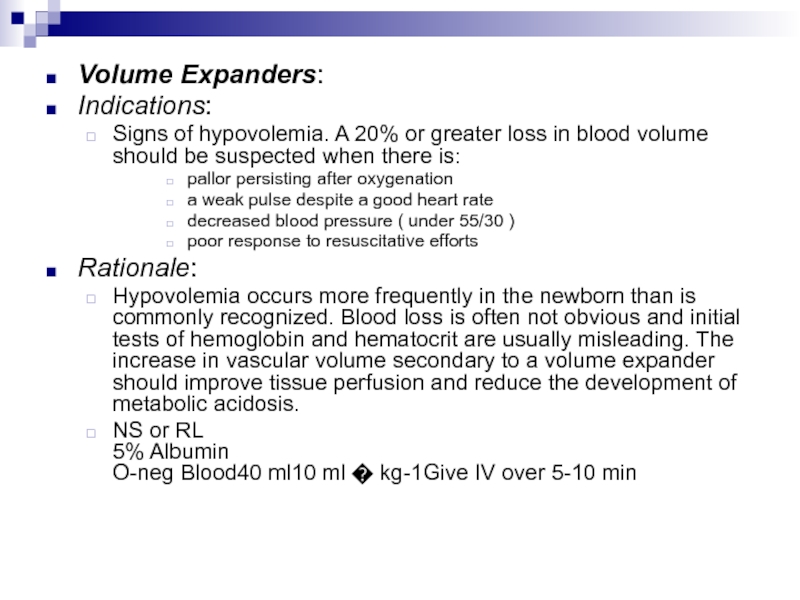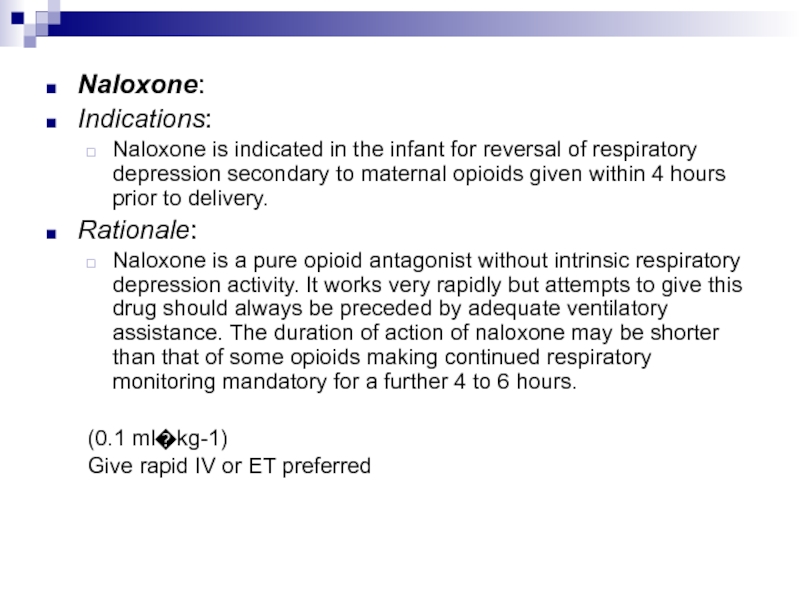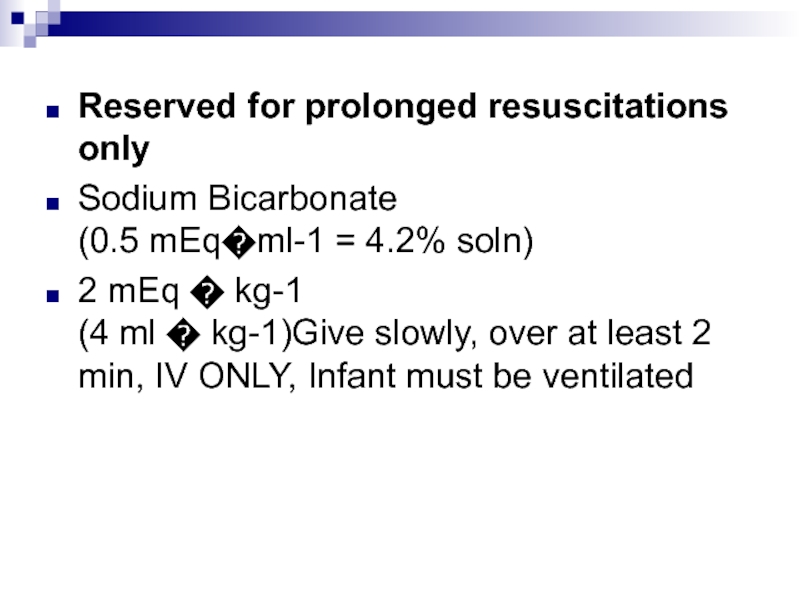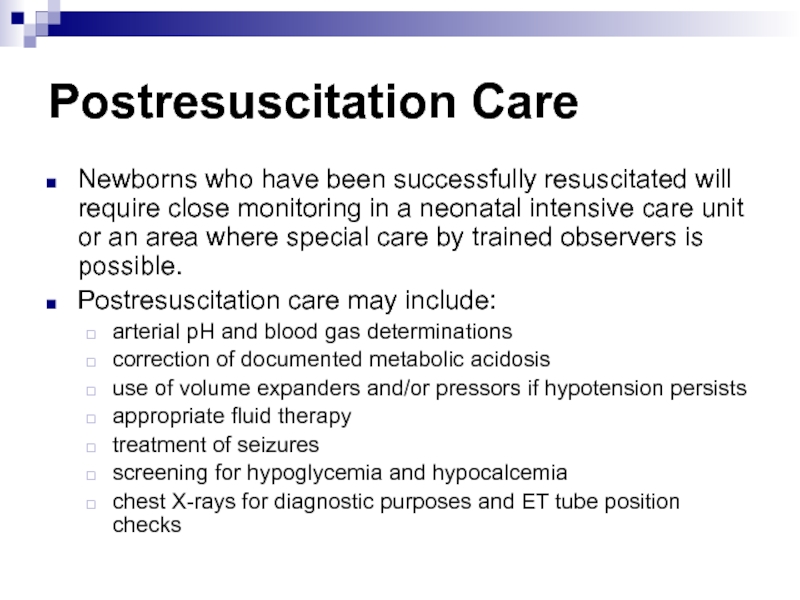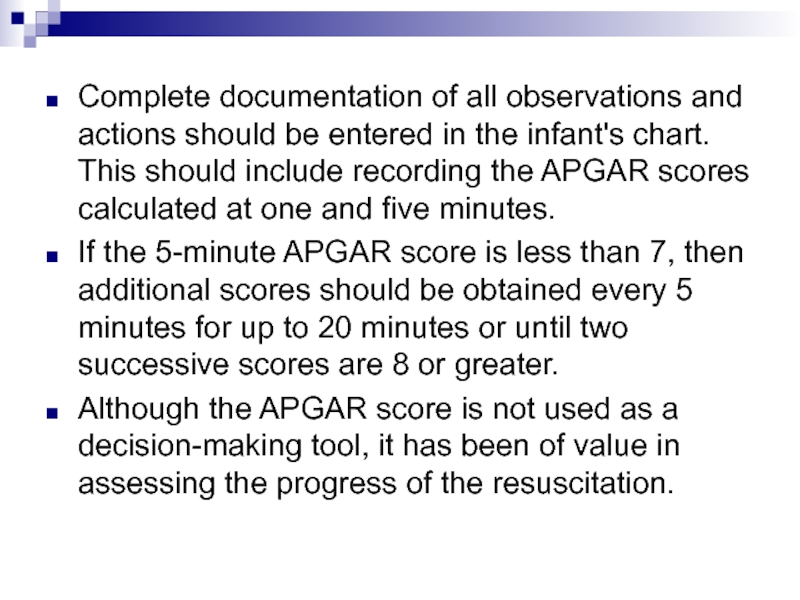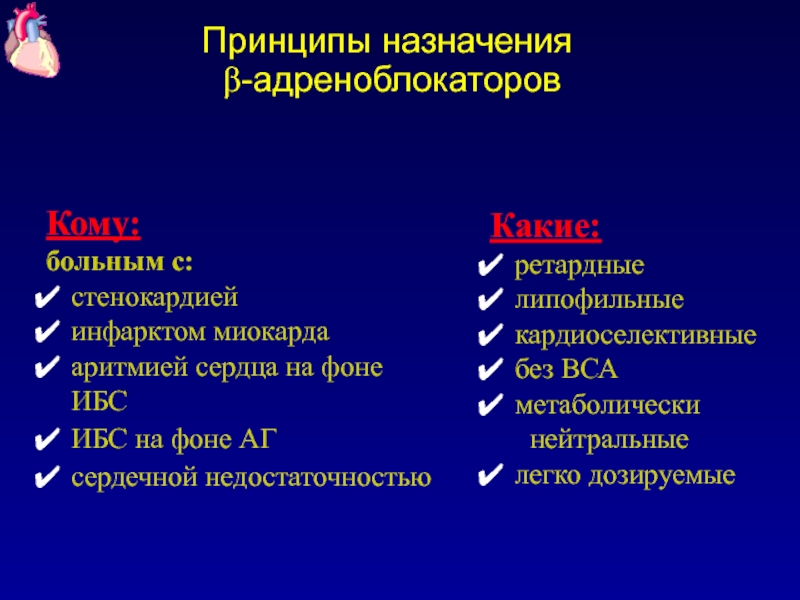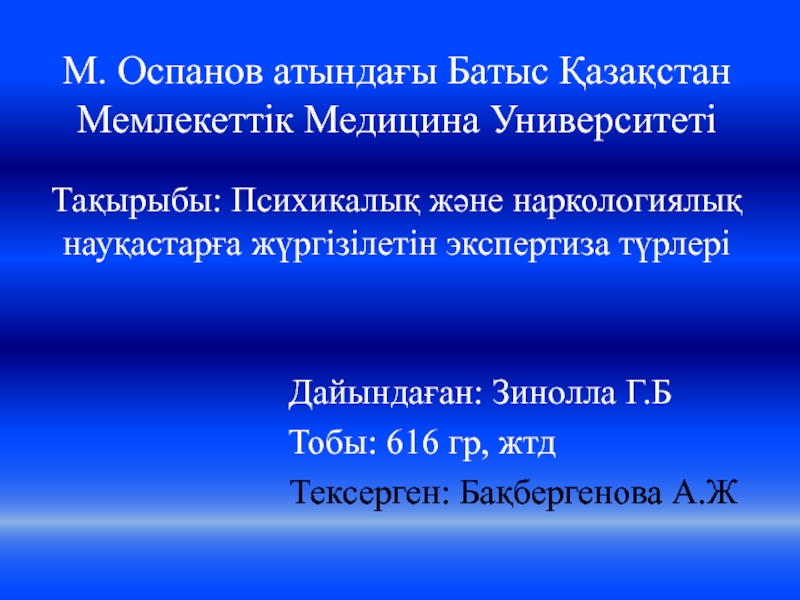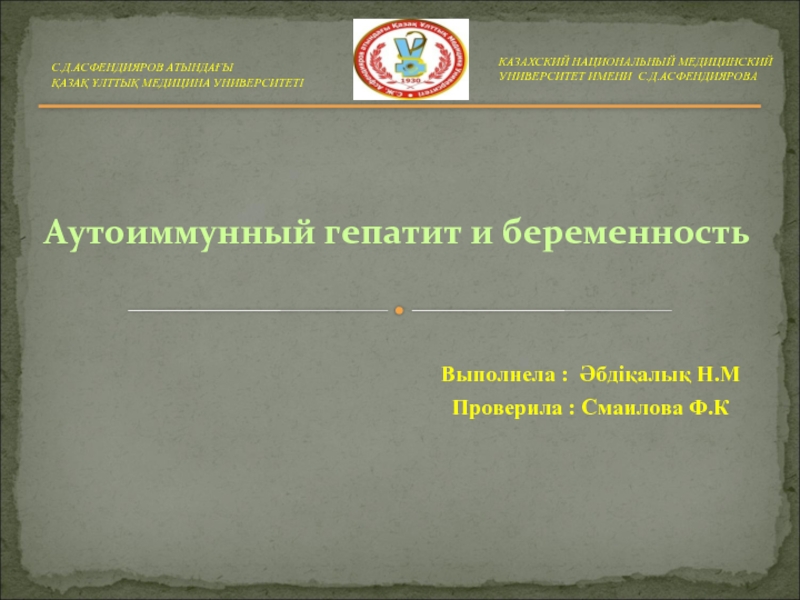- Главная
- Разное
- Дизайн
- Бизнес и предпринимательство
- Аналитика
- Образование
- Развлечения
- Красота и здоровье
- Финансы
- Государство
- Путешествия
- Спорт
- Недвижимость
- Армия
- Графика
- Культурология
- Еда и кулинария
- Лингвистика
- Английский язык
- Астрономия
- Алгебра
- Биология
- География
- Детские презентации
- Информатика
- История
- Литература
- Маркетинг
- Математика
- Медицина
- Менеджмент
- Музыка
- МХК
- Немецкий язык
- ОБЖ
- Обществознание
- Окружающий мир
- Педагогика
- Русский язык
- Технология
- Физика
- Философия
- Химия
- Шаблоны, картинки для презентаций
- Экология
- Экономика
- Юриспруденция
Neonatal resuscitation fatma aletebi презентация
Содержание
- 1. Neonatal resuscitation fatma aletebi
- 2. Asphyxia - The Basics Apnea The
- 3. Clearing Fetal Lung Fluid The first
- 4. Pulmonary Circulation At birth, pulmonary blood
- 5. Systemic Circulation and Cardiac Function Early
- 6. Preparation for Delivery Anticipate Need for
- 7. Antepartum Factors Age > 35 years
- 8. Intrapartum Factors Abnormal presentation Operative delivery
- 9. Personnel At every delivery, at least
- 10. When neonatal asphyxia is anticipated, two individuals
- 11. Equipment Equipment and medications should be
- 12. Resuscitation Equipment in the Delivery Room
- 13. Initial Stabilization Prevent Heat Loss Place
- 14. Open the Airway Position the infant
- 15. Tactile Stimulation If drying and suctioning
- 16. Evaluate the Infant Respirations: Infants who
- 18. Ventilating Procedure When ventilatory support is
- 19. Adequate ventilation is assessed by observing chest
- 20. After 15-30 seconds of effective ventilation, the
- 21. The next step in the resuscitation depends
- 23. Chest Compressions Rationale Asphyxia in the
- 24. Indications When to Begin Chest Compressions:
- 25. Technique Location: Pressure should be applied
- 26. Thumb Method: Encircle the torso with both
- 28. Evaluating the Heart Rate After the
- 29. Endotracheal Intubation Indications In most cases,
- 30. Other Equipment Laryngoscope: Attach to the
- 31. Confirmation of ET Tube Placement If
- 32. Complications of Intubation HypoxiaTaking too long
- 33. Tracheal Suction for Meconium Aspiration About
- 34. If meconium is present in an infant
- 35. Drugs and Fluids For the majority of
- 36. Epinephrine: Indications: - the heart
- 37. Volume Expanders: Indications: Signs of
- 38. Naloxone: Indications: Naloxone is indicated
- 39. Reserved for prolonged resuscitations only Sodium Bicarbonate
- 40. Postresuscitation Care Newborns who have been
- 41. Complete documentation of all observations and actions
Слайд 2Asphyxia - The Basics
Apnea
The asphyxiated infant passes through a series of
rapid breathing and fall in heart rate
primary apnea
irregular gasping, further fall in heart rate and drop in blood pressure
secondary apnea
Most infants in primary apnea will resume breathing when stimulated. Once in secondary apnea, infants are unresponsive to stimulation.
Apnea at birth should be treated as secondary apnea of unknown duration (i.e. began in utero) and resuscitation should begin at once.
Слайд 3Clearing Fetal Lung Fluid
The first few breaths of a normal infant
The pressure required to open the alveoli for the first time may be two to three times that for normal breaths.
Expect problems in lung fluid clearance with:
apnea at birth
weak initial respiratory effort caused by:
prematurity
depression by asphyxia, maternal drugs, or anaesthesia
Слайд 4Pulmonary Circulation
At birth, pulmonary blood flow increases rapidly as the lung
With asphyxia, hypoxemia and acidosis perpetuate pulmonary vasoconstriction and maintain the fetal pattern of circulation.
Слайд 5Systemic Circulation and Cardiac Function
Early in asphyxia, vasoconstriction in the gut,
With progressive hypoxemia and acidosis, myocardial function deteriorates and cardiac output declines
Слайд 6Preparation for Delivery
Anticipate Need for Resuscitation
Antepartum and intrapartum history may help
Слайд 7Antepartum Factors
Age > 35 years
Maternal diabetes
Pregnancy-induced hypertension
Chronic hypertension
Other maternal illness
(e.g.
Слайд 8Intrapartum Factors
Abnormal presentation
Operative delivery
Premature labour
Premature rupture of membranes
Precipitous labour
Prolonged labour
Indices
Слайд 9Personnel
At every delivery, at least one individual should be capable of
A second person who will be primarily responsible for the infant, must be present in the delivery room as well, even for cases when a normal infant is expected. This person must be able to initiate a resuscitation and if a complete resuscitation becomes necessary, assist the fully-trained person.
Слайд 10When neonatal asphyxia is anticipated, two individuals whose sole responsibility is
With multiple births, a team is needed for each infant.
There should be no delay in initiating resuscitation; waiting a few minutes for someone "on-call" to arrive is an unacceptable practice and invites disaster.
Слайд 11Equipment
Equipment and medications should be checked as a daily routine and
The delivery room should be kept relatively warm and the radiant heater should be preheated when possible. Prewarming of towels and blankets can also be helpful in preventing excessive heat loss from the neonate.
Слайд 12Resuscitation Equipment in the Delivery Room
Radiant Heater
Stethoscope
ECG monitor
Wall oxygen with flowmeter
Слайд 13Initial Stabilization
Prevent Heat Loss
Place the infant under an overhead radiant heater
Dry the body and head to remove amniotic fluid and prevent evaporative heat loss. This will also provide gentle stimulation to initiate or help maintain breathing.
Слайд 14Open the Airway
Position the infant supine or on his or her
A folded towel (approximately 2.5 cm thick) placed under the infant's shoulders may be useful if the infant has a large occiput.
If the infant has absent, slow or difficult respirations, apply suction first to the mouth and then nose. If the nose were cleared first the infant may gasp and aspirate secretions in the pharynx. If mechanical suction with an 8F or 10F catheter is used, make sure the vacuum does not exceed -13.3 kPa (-100 mmHg). Limit suctioning to 5 seconds at a time and monitor heart rate for bradycardia which may be associated with deep oropharyngeal stimulation.
If meconium is present in the amniotic fluid, special suctioning may be required in the depressed infant.
Слайд 15Tactile Stimulation
If drying and suctioning do not induce effective breathing, additional
slapping or flicking the soles of the feet
rubbing the back gently
Do not waste time continuing tactile stimulation if there is no response after 10 - 15 seconds.
Слайд 16Evaluate the Infant
Respirations: Infants who are apneic or gasping despite brief
Heart Rate: Monitor either by auscultating the apical beat or by palpating the base of the umbilical cord. If the heart rate is below 100 bpm, begin positive-pressure ventilation, even if the infant is making some respiratory efforts. If the heart rate is above 100 bpm, go to the next step.
Colour: The presence of central cyanosis indicates that although there is enough oxygen passing through the lungs to maintain the heart rate, the infant is still not well oxygenated. Free-flow 100% oxygen at 5 l�min-1 using a mask held closely to the infant's face should be administered until the infant becomes pink, when the oxygen should be gradually withdrawn.
Слайд 18Ventilating Procedure
When ventilatory support is required, most neonates can be adequately
apnea or gasping respiration is present
the heart rate is less than 100 beats / minute
central cyanosis persists despite 100 O2
Ventilation should be adequate with 40 to 60 assisted breaths per minute. Initial lung inflation may require a pressure as high as 30-40 cm H2O but subsequent breaths should be in the 15-20 cm H2O range.
Слайд 19Adequate ventilation is assessed by observing chest wall motion and hearing
reapply the face mask to rule out a poor seal
reposition the head - extend the head a bit further - reposition the shoulder towel
check for secretions - suction if necessary
try ventilating with the infant's mouth slightly open - perhaps with an oral airway
increase pressure to 20-40 cm H2O
abandon bag and mask - intubate trachea
Слайд 20After 15-30 seconds of effective ventilation, the heart rate of the
Слайд 21The next step in the resuscitation depends on the heart rate
HR > 100If spontaneous breath efforts are present, gradually reduce PPV and provide gentle tactile stimulation plus free-flow O2.
HR < 60Immediately begin chest com- pressions and ensure that ventilation is adequate and that 100% O2 is being delivered.
60 < HR < 80 (not rising)Continue ventilation and begin chest compressions.60 < HR < 100 (rising)Continue ventilation
Слайд 23Chest Compressions
Rationale
Asphyxia in the neonate not only slows the heart rate
Chest compressions must always be accompanied by ventilation with 100% oxygen.
Pressing on the sternum compresses the heart and increases the intrathoracic pressure, causing blood to be pumped into the arterial circulation. Release of the sternal pressure will increase venous blood to return to the heart.
Слайд 24Indications
When to Begin Chest Compressions:
After 15-30 seconds of PPV with
the heart rate is below 60 bpm
the heart rate is between 60 and 80 and not rising
When to Stop Chest Compressions:
the heart rate is 80 bpm or greater
Слайд 25Technique
Location: Pressure should be applied to the middle third of sternum,
Pressure: Use just enough pressure to depress the sternum 1.5 cm, then release the pressure to allow the heart to fill. One compression consists of the downward stroke plus the release.
Rate: To match the heart rate of the normal neonate, the compress/release action should be repeated 120 times per minute (2 per second).
Слайд 26Thumb Method: Encircle the torso with both hands and compress the
Two-finger Method: This method is used if the resuscitator's hands are too small to encircle the chest properly or if access to the umbilicus is necessary for medications. The middle and ring fingers of one hand are held perpendicular to the chest and the tips apply pressure to the sternum while the other hand is used to support the back from below.
Слайд 28Evaluating the Heart Rate
After the first 30 seconds of chest compressions,
During the heart rate check, the chest compressions are interrupted for no more than the 6 seconds it takes to count the heart beats and make the calculation.
If the infant is showing a positive response to the resuscitative efforts then one should check the heart rate every 30 seconds in order to stop chest compressions when the infant's own heart rate rises to 80 or above. Ventilation should be continued until the heart rate is above 100 bpm.
Should the infant's heart rate remain below 80 bpm despite at least 30 seconds of adequate chest compressions and ventilation, resuscitation should progress rapidly to the next step of giving medications
Слайд 29Endotracheal Intubation
Indications
In most cases, when positive-pressure ventilation is required, it should
resuscitators will be very skilled at intubation, others with less experience may waste valuable time, delaying resuscitation.
Endotracheal intubation is indicated in the following circumstances:
prolonged PPV required (to avoid gastric distension)
bag and mask ineffective (poor chest expansion, continuing low HR)
tracheal suctioning required (thick or particulate meconium)
diaphragmatic hernia suspected (prevent bowel distension in the chest)
Слайд 30Other Equipment
Laryngoscope: Attach to the handle the appropriate size straight (Miller)
Suction Equipment: Mechanical suction should be available and adjusted so that when the tubing is occluded the negative pressure does not exceed 13.3 kPa (100 mmHg). A suction catheter sized 10 F or larger should be present. Smaller catheters for suction through ET tubes should be available.
Resuscitation Bag and Mask connected to 100% O2: The bag and mask should be handy to ventilate between intubation attempts or should intubation be unsuccessful. The bag itself will be used to ventilate through the ET tube.
Слайд 31Confirmation of ET Tube Placement
If the ET tube is correctly placed
air enters both sides of the chest (Listen in the axillae to avoid mistaking air entering the stomach for breath sounds.)
breath sounds are equal in intensity
symmetrical rise of the chest with each breath
no air heard entering the stomach
no abdominal distension
improvement in colour, heart rate and activity of the neonate
A chest X-ray should be obtained for final confirmation if the tube is to stay in place beyond the initial resuscitation.
Слайд 32Complications of Intubation
HypoxiaTaking too long to intubate Incorrect placement of tube
Bradycardia/ApneaHypoxia Vagal response due to stimulation of posterior pharynx (laryngoscopy, suction)
PneumothoraxExcessive pressure during ventilation or ET tube in right mainstem bronchus
Contusions or Lacerations (tongue, gums,epiglottis, cords)Rough handling of laryngoscope or ET tube Laryngoscope blade too long or too short
Perforation of trachea or esophagusInsertion of tube too vigorous or stylet protrudes beyond end of ET tube
InfectionOrganisms introduced via equipment or hands
Слайд 33Tracheal Suction for Meconium Aspiration
About one in eight deliveries are complicated
Слайд 34If meconium is present in an infant with respiratory difficulties, then
If the neonate is depressed or the meconium is thick or particulate, then direct endotracheal suctioning should be performed. (See note #6)
Слайд 35Drugs and Fluids
For the majority of infants who require resuscitation, the
Слайд 36Epinephrine:
Indications:
- the heart rate stays below 80 despite effective
- the heart rate is zero
Rationale:
Epinephrine has both a- and b-adrenergic stimulating properties. The alpha effect causes vasoconstriction which raises the perfusion pressure during chest compressions, augmenting oxygen delivery to both heart and brain. The beta effect enhances cardiac contractility, stimulates spontaneous contractions and increases heart rate
(1:10,000)1 ml0.01-0.03mg � kg-1 (0.1-0.3 ml � kg-1)Give rapidly IV or ET Repeat q3-5 min (ET: dilute to 1-2 ml with NS
Слайд 37Volume Expanders:
Indications:
Signs of hypovolemia. A 20% or greater loss
pallor persisting after oxygenation
a weak pulse despite a good heart rate
decreased blood pressure ( under 55/30 )
poor response to resuscitative efforts
Rationale:
Hypovolemia occurs more frequently in the newborn than is commonly recognized. Blood loss is often not obvious and initial tests of hemoglobin and hematocrit are usually misleading. The increase in vascular volume secondary to a volume expander should improve tissue perfusion and reduce the development of metabolic acidosis.
NS or RL 5% Albumin O-neg Blood40 ml10 ml � kg-1Give IV over 5-10 min
Слайд 38Naloxone:
Indications:
Naloxone is indicated in the infant for reversal of
Rationale:
Naloxone is a pure opioid antagonist without intrinsic respiratory depression activity. It works very rapidly but attempts to give this drug should always be preceded by adequate ventilatory assistance. The duration of action of naloxone may be shorter than that of some opioids making continued respiratory monitoring mandatory for a further 4 to 6 hours.
(0.1 ml�kg-1)
Give rapid IV or ET preferred
Слайд 39Reserved for prolonged resuscitations only
Sodium Bicarbonate
(0.5 mEq�ml-1 = 4.2% soln)
2 mEq
Слайд 40Postresuscitation Care
Newborns who have been successfully resuscitated will require close monitoring
Postresuscitation care may include:
arterial pH and blood gas determinations
correction of documented metabolic acidosis
use of volume expanders and/or pressors if hypotension persists
appropriate fluid therapy
treatment of seizures
screening for hypoglycemia and hypocalcemia
chest X-rays for diagnostic purposes and ET tube position checks
Слайд 41Complete documentation of all observations and actions should be entered in
If the 5-minute APGAR score is less than 7, then additional scores should be obtained every 5 minutes for up to 20 minutes or until two successive scores are 8 or greater.
Although the APGAR score is not used as a decision-making tool, it has been of value in assessing the progress of the resuscitation.
